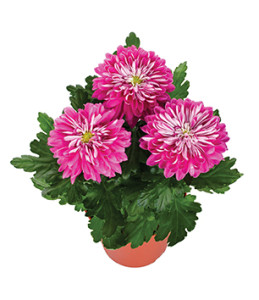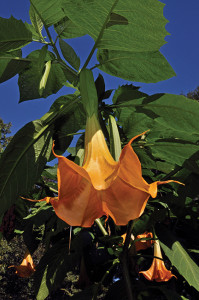Fall Color in the Garden
Posted on August 30, 2014 by bob in Yard 'N Garden
When September arrives, and the heat and humidity of summer begin to recede, southern gardeners think about enjoying being outside in their gardens. There are many possibilities for fall plants, some well known and others not so common. There are fall blooming bulbs, shrubs with leaves that turn beautiful colors in autumn, and plants that flower late in summer and into the fall. These plants can make your garden interesting and colorful well into November.
Bulbs are usually associated with springtime displays of daffodils, crocus and hyacinths. However, there are several bulbs that can be planted in the fall, will bloom about three weeks later, and then return each fall to put on their display. Perhaps the best known of these fall flowering bulbs is the Colchicum, commonly call Autumn Crocus or Naked Lady.
The Colchicums are not related to crocus at all, but are more closely related to lilies; however the flower does look a lot like the crocus flower. Colchicums produce large, goblet-shaped blooms in shades of pink, lavender, and white. True Autumn Crocus is another bulb that blooms from September through December in shades of lilac, purple-blue and white. Both of these bulbs require sun and somewhat fertile soil that has good drainage; they will rot in heavy soil.
Another shared characteristic of these two bulbs is their leaves appear in the spring to nourish the bulbs and then die back to the earth. When the flowers appear in the autumn they seem to magically spring from the soil. Locating these bulbs in a retail store can be difficult, but they are readily available from mail-order nurseries.
 One well-known shrub with wonderful fall color is our native Oak Leaf Hydrangea. Not only does it provide lovely fresh and dried flowers in the summer, it also distinguishes itself in the autumn by turning its leaves red and reddish purple. It does take up some space in the shrubbery border, but requires little care beyond a bit of pruning.
One well-known shrub with wonderful fall color is our native Oak Leaf Hydrangea. Not only does it provide lovely fresh and dried flowers in the summer, it also distinguishes itself in the autumn by turning its leaves red and reddish purple. It does take up some space in the shrubbery border, but requires little care beyond a bit of pruning.
Don’t forget the Paniculata Hydrangeas such as the dependable and pretty “Limelight” known for its greenish tinged summer flowers that turn slightly pink in the fall. Other shrubs to consider for fall color include Barberry (deer resistant), Beautyberry for its purple berries, Bottlebrush Buckeye for its vibrant gold foliage, and Red Twig Dogwood for its beautiful red stems.
When it comes to late blooming perennials, there are many excellent choices beyond the popular chrysanthemum. Blue Mist shrub (Caryopteris), although named a shrub because of its large size, is really an herbaceous perennial that dies to the ground after a frost. There are several varieties with flower colors ranging from yellow to blue to blue/violet to dark purple.
Another large, back of the border plant is Joe Pye weed (Eupatorium), known for its mauve flowers. Unchecked it can reach heights of five or six feet, but pinching it back early in the growing season will result in a smaller, thicker plant.
There are many autumn sedums such as Autumn Joy or Matrona. Sedums are great plants because they are easy to grow, compact, heat and drought tolerant, and available in a variety of leaf colors including green, variegated, and mahogany with flowers in shades of pink and red.
If you have a large garden area, consider growing Angel Trumpet (Brugmansia), a tropical that over-winters well in Alabama with a little protection. It has many spectacular footlong trumpet-shaped flowers beginning in late September in yellow, pink, white or purple. Each year it dies with the first frost only to return taller and with more stems every year. A 10 year old yellow one in my garden is now nine feet tall and covers itself with flowers each fall.
With just a little bit of planning you will have a colorful garden through November into December.
Dr. Barbara Witt is a Master Gardener with the Capital City Master Gardener Association. For information on becoming a master gardener, visit the website, www.capcitymga.org or e-mail capcitymga@gmail.com.
(EDITOR’S NOTE: Many common garden plants are poisonous to people and pets, including Colchicums and Angel Trumpets mentioned here. Protect yourself and those you love by being aware of the plants that present a hazard to children and pets.)










